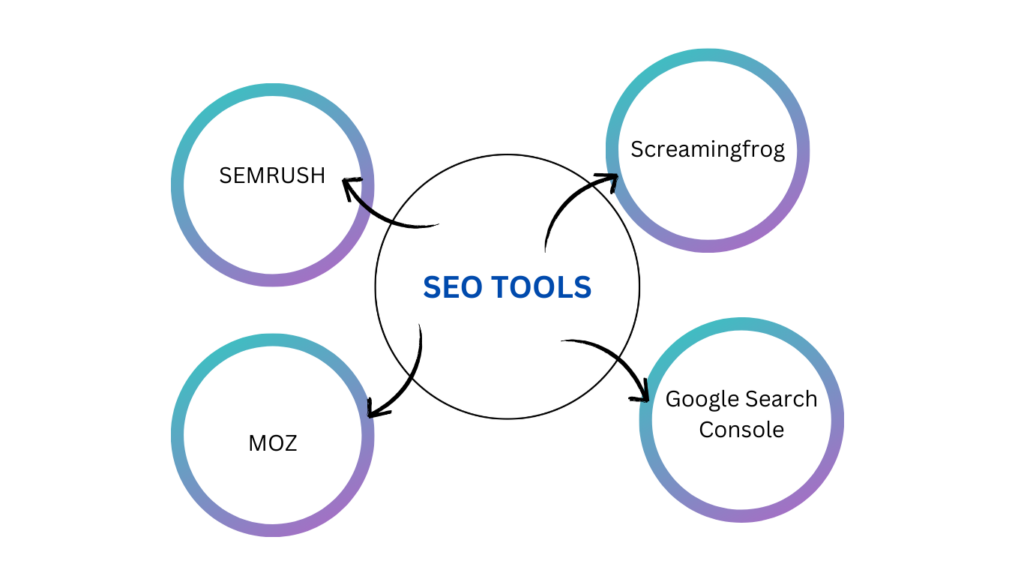
Search Engine Optimization refers to the process of how you enhance your website presence so as it would show up on search results such as google. while optimization for your website ,organic traffic increases, engagement happens and your overall online presence becomes improved. This beginner guide will walk you through basic SEO, making this all a little easier for starters.
What is SEO
SEO encompasses a number of methods intended to increase the ranking for a site. The better is the ranking, the easier it will be to attract visitors. On the core components of SEO rests keyword research, on-page optimization, content creation, link building, and technical SEO.
Why SEO is matter
In today’s digital landscape, having a well-optimized website is very important. SEO helps businesses reach their target audience by ensuring that their site comes up when users search for relevant topics. Without SEO, even the best content may go unnoticed.
Keyword Research
Keyword research is the basic concept of SEO. It basically defines those terms and phrases with which people search on their favorite search engines. Google Keyword Planner and Ahrefs are some useful tools which help you find long-tail keywords that can rank. In keyword research, prioritize the following:
Search volume
Keyword difficulty
Your content relevance
Pro Tip: Use long-tail keywords as they mostly have fewer competitions and higher conversion rates.
On-page SEO
On-page SEO works on optimizing each web page so that it can rank high. It includes:
Title tags
Meta descriptions
Header tags (H1, H2, H3)
URL structure
Internal linking
Image alt text
Make sure your target keyword appears naturally in the content. Do not engage in keyword. stuffing as this will attract penalties.
Quality Content
Content is king in the world of SEO. High-quality content not only attracts visitors but also encourages them to stay longer, reducing bounce rates. Content should be:
Relevant and informative
Engaging and well-structured
Regularly updated
When creating content, consider the following:
Address user intent
Use clear headings and subheadings
Incorporate visuals and infographics
Off-page SEO
Off-page SEO necessitates link building. When websites include your website backlinks coming from high-ranking sites that provide relevance and creditability for the search engine of your website. Common methodologies of efficient link building
are:
Guest blogging
Partnerships
Broken link building
Focus your strategies on obtaining links through your niche relevance sites.

Technical SEO
Technical SEO verifies that your website is optimized towards the technical criteria of your
search engines. They cover:
Mobile-friendliness
Site speed
Secure socket layer (SSL)
Structured data
A technically sound website improves user experience and facilitates better indexing by search engines.
Measuring SEO Success
Monitoring SEO performance is essential to know what works and what does not. Tools such as Google Analytics and Search Console give insights into traffic, bounce rates, and keyword rankings. Monitor and tweak your strategy regularly to stay ahead.
Common SEO Mistakes to Avoid
Newbies often make mistakes that can hinder SEO progress. Avoid:
Ignoring mobile optimization
Overlooking meta descriptions
Using duplicate content
Neglecting internal linking
The Role of Content in SEO
Content plays a significant role in every aspect of SEO. Be it keyword integration or link building, content drives the success of your optimization efforts. Create valuable content that answers questions, solves problems, and provides in-depth information. The more content you produce, the better your chances of ranking higher.
Content Marketing and SEO
Content marketing is a supplement to SEO by sharing valuable content across platforms. This increases visibility and brings traffic back to your site. Incorporate blog posts, videos, podcasts, and infographics in your strategy.
Pro Tip: Repurpose content across different channels to maximize reach.
Updating Old Content
Regularly updating old content can improve SEO. Refresh outdated information, add new insights, and optimize for current keywords. This keeps your content relevant and ensures continuous traffic.
SEO Tools to Use
There are many tools that can make SEO tasks easier. Some of the most popular ones are:
SEMRUSH
Screamingfrog
Google Search Console
MOZ

Mobile-First Indexing
Mobile-first indexing means Google indexes mobile versions of websites first. Your site should be mobile-friendly, so use responsive design and optimize images.
SEO and User Experience
The importance of a seamless user experience is to achieve SEO. Improve navigation, reduce loading times, and ensure a clean and responsive design. Positive UX encourages visitors to spend more time on your website, thereby giving signals to search engines that your site is valuable.
SEO is a process that requires continuous effort and learning. Understanding the basics and producing quality content helps beginners make significant improvements to their website’s visibility and traffic. Remember that content is the foundation for good SEO. Spend time producing valuable, engaging content and success will follow.
